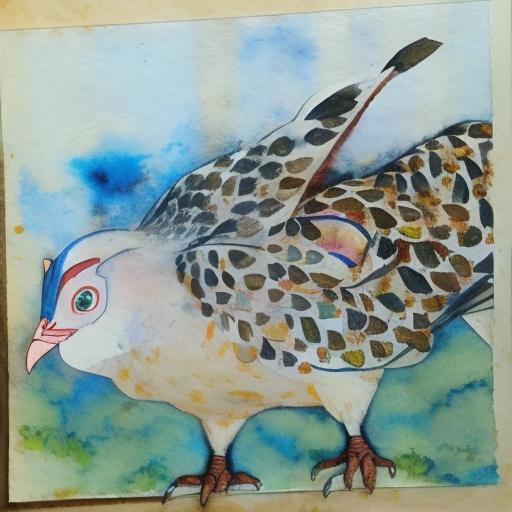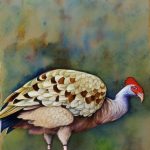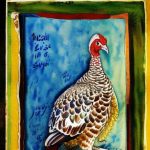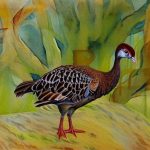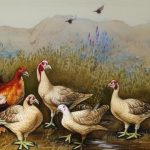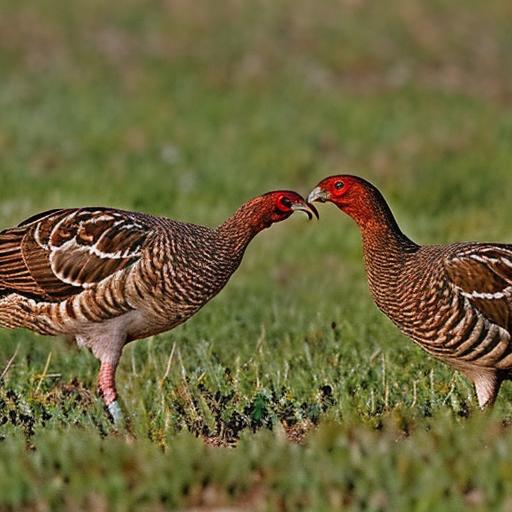Turkey breeding is the process of raising turkeys for the purpose of producing offspring. Turkeys are large birds native to North America and are known for their distinctive fan-shaped tails and wattled necks. They are popular for their meat, feathers, and as pets. Breeding turkeys can be done in both domestic and wild settings, with different methods and considerations for each. In the wild, turkeys breed during specific mating seasons, while domestic turkey breeding is often controlled and managed by humans. Understanding the breeding behavior and needs of turkeys is essential for successful breeding and ensuring the health and well-being of the birds.
Key Takeaways
- Turkey breeding is an important aspect of poultry farming and wildlife conservation.
- Wild turkeys have a specific mating season, usually in the spring, when breeding behavior is most active.
- Domestic turkey breeding involves artificial insemination and controlled breeding to ensure desirable traits in the offspring.
- Factors such as nutrition, environment, and genetics can affect the success of turkey breeding.
- Signs of breeding behavior in turkeys include strutting, gobbling, and displaying their feathers to attract mates.
Mating Season for Wild Turkeys
Wild turkeys have a specific mating season that typically occurs in the spring. During this time, male turkeys, known as toms, display elaborate courtship behaviors to attract females, known as hens. Toms will puff out their feathers, fan their tails, and strut around in an attempt to impress the hens. They also emit a distinctive gobbling sound to communicate with potential mates. Once a tom has successfully attracted a hen, they will engage in mating rituals, which can involve multiple attempts over several days. The hens will then seek out a suitable nesting site to lay their eggs, which they will incubate for about 28 days before hatching. This natural mating process ensures the continuation of the wild turkey population and is essential for maintaining healthy ecosystems.
In addition to the spring mating season, wild turkeys may also engage in breeding behavior during the fall, although this is less common. During the fall, toms may display similar courtship behaviors in preparation for the following spring mating season. Understanding the natural mating behaviors of wild turkeys is important for conservation efforts and managing wild turkey populations. By protecting their natural habitats and ensuring their safety during mating seasons, conservationists can help maintain healthy populations of wild turkeys for future generations to enjoy.
Domestic Turkey Breeding
Domestic turkey breeding involves raising turkeys in a controlled environment for the purpose of producing meat, eggs, or offspring. Unlike wild turkeys, domestic turkeys may not follow a strict mating season and can be bred throughout the year. Breeders often use selective breeding techniques to produce turkeys with desirable traits such as size, meat quality, or egg production. This can involve carefully choosing which turkeys to breed based on their genetic characteristics and monitoring their offspring for specific traits. Artificial insemination may also be used to control breeding and ensure genetic diversity within domestic turkey populations.
In addition to meat and egg production, domestic turkey breeding also plays a role in preserving rare or heritage breeds of turkeys. Some breeders focus on maintaining genetic diversity within turkey populations by breeding and conserving rare breeds that are at risk of extinction. This helps to ensure that unique genetic traits and characteristics are preserved for future generations. By understanding the specific needs and behaviors of domestic turkeys, breeders can create optimal conditions for successful breeding and contribute to the sustainability of turkey populations.
Factors Affecting Turkey Breeding
Several factors can affect the breeding success of turkeys, both in the wild and in domestic settings. Environmental factors such as temperature, humidity, and access to suitable nesting sites can impact the breeding behavior of turkeys. In the wild, changes in habitat due to deforestation or urban development can disrupt natural mating behaviors and nesting sites for wild turkeys. Conservation efforts aim to protect and restore natural habitats to support healthy turkey populations.
In domestic settings, factors such as diet, housing conditions, and health care can influence the breeding success of turkeys. Providing a balanced diet with essential nutrients is crucial for reproductive health in both male and female turkeys. Proper housing that allows for nesting and privacy can also encourage natural breeding behaviors in domestic turkeys. Additionally, regular veterinary care and disease prevention measures are important for maintaining the overall health and fertility of turkey flocks. By addressing these factors, breeders can create optimal conditions for successful turkey breeding and ensure the well-being of their birds.
Signs of Breeding Behavior in Turkeys
Turkeys display specific behaviors and physical signs when they are ready to breed. In both wild and domestic settings, male turkeys will exhibit courtship displays such as puffing out their feathers, fanning their tails, and strutting around to attract females. They may also emit gobbling sounds to communicate with potential mates. Female turkeys will show receptive behavior by crouching down and remaining still when approached by a male. They may also vocalize softly to indicate their readiness to mate.
In addition to behavioral signs, physical changes in turkeys can also indicate breeding readiness. Male turkeys may develop brighter colors on their heads and necks during mating season as part of their courtship displays. Female turkeys may show changes in their reproductive organs as they prepare to lay eggs. Understanding these signs of breeding behavior is important for breeders to identify when their turkeys are ready to mate and provide appropriate conditions for successful breeding.
Importance of Turkey Breeding

Turkey breeding plays a crucial role in providing food, feathers, and other products for human consumption and use. The meat of domestic turkeys is a popular source of protein in many cultures around the world and is consumed during holidays such as Thanksgiving and Christmas. Additionally, turkey feathers are used in various industries, including fashion, crafts, and fly tying for fishing lures. Breeding turkeys also contributes to the conservation of rare or heritage breeds, preserving genetic diversity within turkey populations.
In the wild, turkey breeding is essential for maintaining healthy ecosystems and biodiversity. Turkeys play a role in controlling insect populations and dispersing seeds through their feeding habits and movements. By ensuring the successful breeding of wild turkeys, conservation efforts help support the overall health of natural habitats and the species that depend on them. Understanding the importance of turkey breeding can help guide efforts to protect and sustain healthy turkey populations for future generations.
Conservation Efforts for Turkey Breeding
Conservation efforts for turkey breeding focus on protecting natural habitats, managing populations, and preserving genetic diversity within turkey populations. This includes initiatives to restore and maintain suitable habitats for wild turkeys, such as reforestation projects and protected areas where hunting is regulated. Conservationists also work to monitor turkey populations and address threats such as habitat loss, disease outbreaks, and predation.
In addition to protecting wild turkey populations, conservation efforts also aim to preserve rare or heritage breeds of domestic turkeys. This can involve maintaining genetic registries, promoting sustainable breeding practices, and educating the public about the value of preserving genetic diversity within turkey populations. By raising awareness about the importance of turkey breeding and supporting conservation initiatives, individuals can contribute to the long-term sustainability of turkey populations.
In conclusion, turkey breeding encompasses a wide range of practices and considerations that are essential for maintaining healthy turkey populations in both wild and domestic settings. Understanding the natural mating behaviors of wild turkeys and addressing factors that affect breeding success in domestic turkeys are crucial for supporting sustainable turkey populations. Conservation efforts play a key role in protecting natural habitats, managing populations, and preserving genetic diversity within turkey populations. By recognizing the importance of turkey breeding and supporting conservation initiatives, individuals can contribute to the long-term sustainability of turkey populations for future generations to enjoy.
If you’re curious about when turkeys start breeding, you’ll find some valuable insights in the article “Mating Season for Turkeys” on PoultryWizard.com. Understanding the breeding habits of turkeys is essential for poultry enthusiasts, and this article provides detailed information on the timing and factors influencing turkey mating season. For more tips on raising poultry, including converting a shed into a chicken coop, check out their helpful guide “Convert Shed to Chicken Coop.”
FAQs
What is the breeding season for turkeys?
The breeding season for wild turkeys typically begins in the spring, usually around March or April.
At what age do turkeys start breeding?
Male turkeys, known as toms, can start breeding as early as one year old, while female turkeys, known as hens, usually start breeding when they are around two years old.
How do turkeys attract mates during breeding season?
Male turkeys attract mates by displaying their feathers, puffing up their bodies, and making vocalizations such as gobbling and drumming. This behavior is known as strutting.
How long does the turkey breeding season last?
The turkey breeding season typically lasts for several weeks, with peak breeding activity occurring in the early to mid-spring.
What factors can affect turkey breeding success?
Factors such as habitat quality, food availability, and predator pressure can all impact the breeding success of turkeys. Additionally, weather conditions during the breeding season can also play a role in determining the success of turkey breeding.
Meet Walter, the feathered-friend fanatic of Florida! Nestled in the sunshine state, Walter struts through life with his feathered companions, clucking his way to happiness. With a coop that’s fancier than a five-star hotel, he’s the Don Juan of the chicken world. When he’s not teaching his hens to do the cha-cha, you’ll find him in a heated debate with his prized rooster, Sir Clucks-a-Lot. Walter’s poultry passion is no yolk; he’s the sunny-side-up guy you never knew you needed in your flock of friends!

